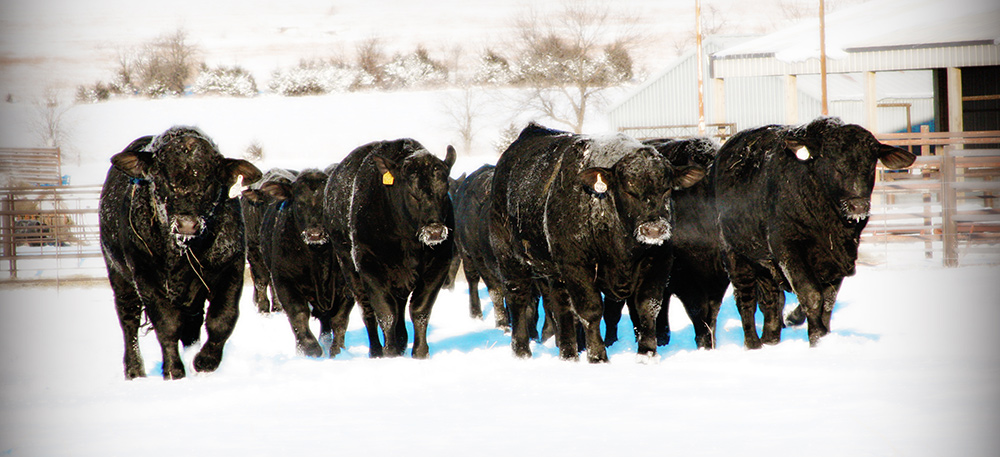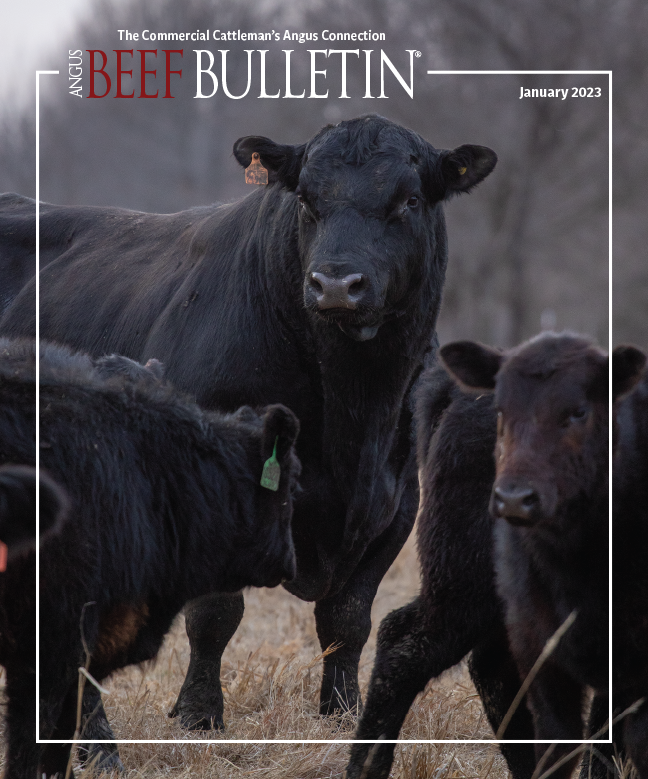
Winter Bull Management
Tips for maintaining bulls during the winter months.
Ideally, bulls should be separated from the cow herd after the breeding season to give them a chance to regain body condition if they lost weight. Winter management of bulls is important to ensure bulls are healthy and in top shape for the next breeding season.
Marty Lueck, Journagan ranch manager at Missouri State University, says bulls must be fed enough to have adequate body condition and a little reserve. He turns some bulls out in November for breeding the fall-calving herd, but says they are in good flesh — body condition score (BCS) of 6 on a 9-point scale — and easy-doers. This makes a difference.
“Many breeders today are pushing for growth and carcass traits, and some of those bulls are not grass cattle and a little different to maintain,” he says. High-performance genetics need more care and feeding.
Lueck says he selects for a very maternal cow herd. Carcass traits are part of the whole picture, but they must balance with good structure, maternal traits and udder quality.
“We pay a lot of attention to the cow side, and our breeding program takes a little different type of bull,” he says. “Some of the high-marbling bulls take more feed to make it work, and they still look rough sometimes.”
Nutrition
Cody Gariss is a third-generation cattle producer, operates the Gariss Ranch near Lamar, Mo., and has a lot of experience taking care of bulls.
“Most of the things involved in winter bull management are very basic, but important,” he says, noting lower temperatures increase energy needs. “We hear a lot of talk about protein, but energy level in the diet is also crucial in winter. Cattle have certain energy needs that must be met, especially during cold weather.”
Gariss is in the seedstock business, so he manages a lot of young, growing bulls, as well as mature bulls. Although young bulls must be managed differently since they are still growing, there are similarities in that they all have to eat a certain amount of dry matter (DM) each day. The principle is similar whether you are feeding a growing 1,200-pound (lb.) bull or a mature 2,000-lb. bull.
“You need to know what the expectations are in terms of amount of dry matter per day,” he says.
In cold weather bulls need a diet that includes available energy, since they require more calories to stay warm while maintaining body condition. There are many good ways to feed bulls and many different feeds that work. It usually depends on what’s available and what it costs.
It’s also important to have a dependable water source that doesn’t freeze.
“We generally think about the importance of water during summer when it’s hot, but it’s equally important to have adequate water in the winter,” says Gariss. If cattle don’t have enough water, they won’t eat enough.
Protection from the elements
They may need bedding in cold weather.
“If the bulls are out on pasture or out with cows in a breeding season for fall calving, they are often on good stockpiled fescue pasture. They don’t need bedding in that situation because they have some grass to lie down in. Bulls in drylots or on very short grass, however, probably need bedding when temperatures drop.”
This can help prevent scrotal frostbite. An inexpensive bale of straw can prevent a lot of problems and protect the fertility of those bulls, Gariss explains.
Windbreaks are important to reduce wind chill and frostbite.
“In our part of the world, most farms have natural windbreaks, but if you are in more open country, the wind can be very brutal and artificial windbreaks will be needed,” he says.
“Bull management may be more critical for a bull that is breeding fall-calving cows than for a bull that has the winter off and only needs to recover from summer breeding season,” says Gariss.
For more:
If bulls are in pens away from the cows during winter, make sure they are in compatible groups — bulls of similar size and age, Gariss recommends. Young bulls with older, dominant bulls may get picked on and not do as well, especially if older bulls keep them away from the feed.
A good health program is also important.
“In the fall, I like to use a pour-on dewormer that not only controls worms, but also the lice. If bulls have lice, they can be miserable, rubbing out hair, damaging facilities with their constant rubbing,” says Gariss.
Editor’s note: Heather Smith Thomas is a freelance writer and cattlewoman from Salmon, Idaho.

